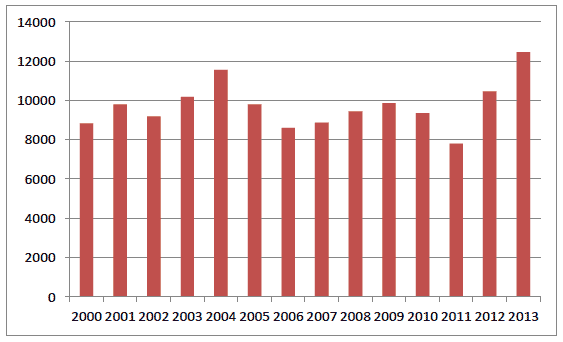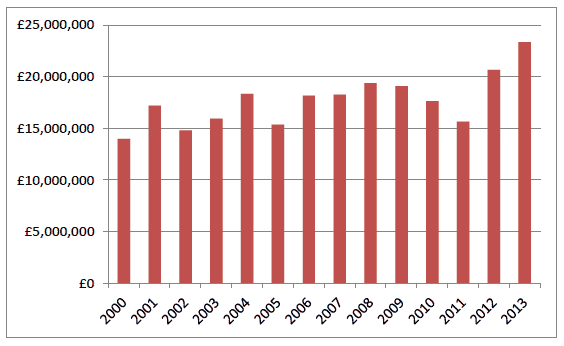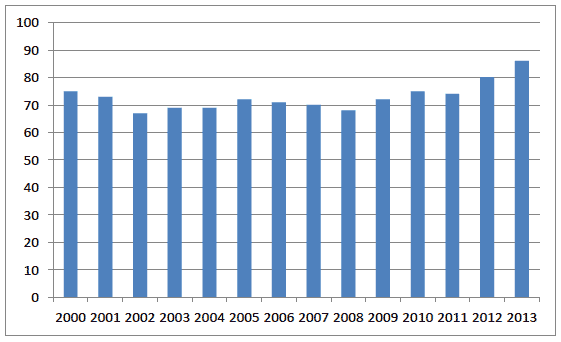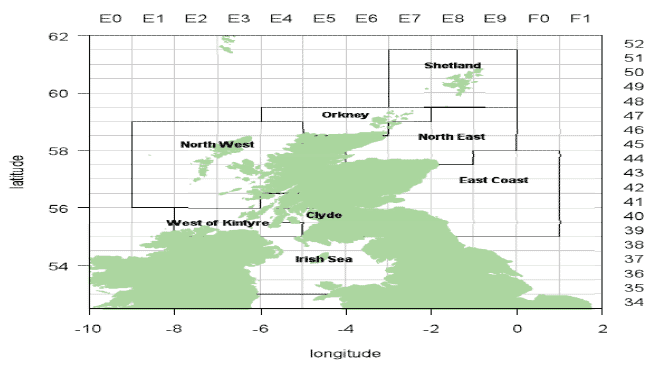Consultation on New Controls in the Scottish King Scallop Fishery 2014
Consultation seeking views on possible new management measures in the Scottish king scallop fishery.
Background to the Consultation
Background on the Scottish Scallop Fishery
Scotland has a long tradition of commercial scallop fishing in the waters around its coasts and as long ago as the 1930s vessels in the Clyde began to dredge for scallops. Over the decades the fishery has developed significantly and fishing for scallops, both by dredge and dived means, now occurs right around the coast and is highly important to many fishing ports in Scotland's coastal communities.
The fishery not only provides employment to those working on fishing vessels but also to those employed in secondary industries like processing and transport. Today, Scottish scallops are recognised as a quality product and are consumed across the UK and abroad.
Scallops are the second most valuable shellfish species landed by Scottish vessels and one of the most valuable fish species landed into Scotland. The importance of scallops to the Scottish fishing industry is illustrated in the tonnage and value of scallops landed. In 2013, 12,448 tonnes of scallops were landed with a value of £23.3 million. This compares to 2000 where landings of 8,832 tonnes had a value of £14 million.
Tonnage of scallops landed by UK vessels into Scotland, 2000-2013

Value (£s) of scallops landed into Scotland, 2000-2013

A Review of the Scottish Scallop Fishery
This consultation is informed by the report A Review of the Scottish Scallop Fishery carried out by Poseidon Consultants for Marine Scotland. The review came about as a result of a consultation Marine Scotland ran in 2012 on the introduction of new management measures into the Scottish fishery. Poseidon's review looked at technical, economic and environmental aspects of the fishery. The report highlighted a trend towards growing effort in the fishery and concerns over spawning stock biomass. This consultation focuses on the introduction of national measures to manage increasing fishing effort and increase spawning stock biomass.
The other recommendations arising from the report will be dealt with separately. It is the intention of Marine Scotland that the creation of spatial reserves such as closed areas should be developed locally through Inshore Fisheries Groups. The need for management of fishing activity in Marine Protected Areas ( MPAs) to manage the environmental impact of the fishery in these areas is being addressed through the MPA consultation process.
Current Management Measures in the Scottish Scallop Fishery
The main governance measures that currently cover the Scottish scallop fishery are:
- Vessels over 10 metres in length must have a specific scallop entitlement to prosecute the dredged fishery
- Limits on the number and type of dredges that vessels can use
- Minimum Landing Size restrictions
- An effort restriction on vessels over 15 metres in length operating in the west of Scotland (Areas V,VI and VII)
Scallop Entitlement
Dredged fishing for scallops by vessels over 10 metres in length was restricted in 1999 to those that had fulfilled a requisite track record. There have been longstanding complaints that the required track record was set too low and the potential remains for vessels that do not currently fish for scallops, but hold a scallop entitlement, to begin targeting the fishery.
The issue of the removal of latent entitlements and the threats these vessels posed to the scallop stocks was explored by the Scottish Licensing Review Working Group. Views were sought on the removal of latent entitlements in a consultation earlier this year. Measures proposed and taken following this consultation will be informed by the outcome of that consultation.
Dredge Restriction
The Prohibition of Fishing for Scallops (Scotland) Order 2003 introduced regulations that aimed to control the effort expended in specified zones in Scottish waters by restricting the number of scallop dredges that could be used within these zones. These limits are:
- 8 dredges per side in the 0-6 nautical mile zone
- 10 dredges per side in the 6-12 nautical mile zone
- 14 dredges per side outside 12 nautical miles
There are concerns that dredge limits are often broken as ensuring compliance can be difficult. Dredge restrictions in themselves have also proved to be insufficient in adequately managing the effort expended in the fishery - as fishermen can increase the amount of time spent fishing. Static gear fishermen also report that vessels violating current dredge restriction rules are adding to gear conflict around the coast.
Minimum Landing Size ( MLS)
The current MLS applicable to Scottish waters are specified through EU legislation. In the Irish Sea north of 52°30'N, the MLS is 110 mm, while in all other areas a MLS of 100 mm applies [1] .
Effort Regime
Under the Western Waters effort regime (which applies to all UK waters except the North Sea), effort limits are put in place on vessels over 15 metres in length fishing for scallops [2] . The total effort that UK vessels can expend are:
- 1,974,425 kW days for Sub-areas V and VI (the area to the west of Scotland)
- 3,315,619 kW days in area VII (roughly the Irish Sea, the Celtic Sea and English Channel).
Until recently, the Western Waters effort regime had not impacted on the fishing activity of vessels and consequently no active management measures were needed. However, since the turn of the decade, the effort limit assigned to area VII has restricted the activity of vessels in the area. The introduction of a days at sea regime in Area VII for vessels over 15 metres in length has resulted in displacement and an increase in the amount of fishing effort in the waters around Scotland. This is counter to advice from Marine Scotland Science - to cap fishing mortality or for fishing mortality to be reduced.
Recent Trends in Effort in the Scallop Fishery
Effort in the Scottish scallop fishery has been increasing in recent years. The graph below, shows the number of vessels prosecuting the scallop fishery in Scotland from 2000 to 2013. It shows that the number of vessels targeting the fishery remained fairly stable during the early part of the last decade, but increased from 2008 onwards.
Number of vessels with scallop entitlements targeting fishery, 2000 to 2013

There has also been a recent increase in the effort expended by all UK vessels in Scottish waters. Annex A shows the effort expended by UK vessels in 2011 and 2012 and it can be seen that there is a clear increase in effort in 2012.
To summarise, therefore, in recent years there has been a trend towards:
- Increased landings in the fishery
- Additional vessels joining the fishery
- Increased fishing effort (in terms of kWdays) in Scottish waters
Health of Scottish Scallop Stocks
Regional scallop stock assessments are carried out by Marine Scotland Science Full analytical assessments have been carried out for the West of Kintyre, the North West, the North East and Shetland areas (see map below) and an exploratory assessment is available for the East Coast. Information on the Clyde, Irish Sea and Orkney is limited to total landings data. The latest Marine Scotland stock assessment is available here: http://www.scotland.gov.uk/Resource/0041/00412344.pdf.
Marine Scotland Science, Scallop Assessment Areas

| Area | Stock Status (2012) | Current Advice (Dobby et al. 2012) | 2005-2007 Stock Status (Anon 2010) |
|---|---|---|---|
| Clyde | No assessment | None specified | Not assessed |
| East Coast | Landings sporadic, no analytical assessment. Recent poor recruitment resulting in SSB (spawning stock biomass) declining (survey-based assessment) | None specified | Not assessed |
| Irish Sea | Not formally assessed | No increase in effort | Not assessed |
| North East | Stable SSB & recruitment, F (fishing mortality) above long-term average | No increase in F | Fluctuating SSB and recruitment |
| Shetland | Stable SSB & recruitment, F above long-term average | No increase in F | SSB and recruitment stable |
| North West | SSB & recruitment and catch stable but at a low level. F has declined | Consider increasing SSB, no increase in F | SSB and recruitment declining |
| Orkney | No assessment | None specified | Not assessed |
| West Kintyre | Stock 'reduced', high F | Reduce F, Increase SSB | SSB and recruitment declining |
Marine Scotland Science, Summary of Scallop Assessment 2012
The table above summarises the latest stock assessment carried out by Marine Scotland Science in 2012, associated management advice and a summary of the assessment carried out in 2007. The health of scallop stocks around the Scottish coast varies between assessment areas. Although relatively stable in some areas there are others where spawning stock biomass has declined or remains at a low level.
Marine Scotland Science have suggested a range of measures that could help to control the fishing mortality in the fishery. Those listed included effort restrictions (through limits on kWdays or fleet size), spatial and temporal closures or limits on the quantity landed. These management measures could be implemented alone or in combination.
Marine Scotland Science also recommend that measures to increase the spawning stock biomass should be considered for both the West of Kintyre and the North West assessment areas.
Shetland
The Shetland Shellfish Management Organisation ( SSMO) has, through a Regulating Order, put in place additional management measures for the scallop fishery within the six nautical mile zone around Shetland. These include:
- A limited entry fishery (vessels must have a permit issued by the SSMO)
- An overnight curfew
- A minimum landing size of 110 mm
- A dredge limit restriction of ten dredges in total
- Areas closed to scallop dredging
These and other management arrangements under the RO, including a log book scheme, have enabled the SSMO to gain Marine Stewardship Council ( MSC) certification for the fishery.
The management measures proposed as part of this consultation would not supersede any of the regulations that have been put in place by the SSMO.
Contact
There is a problem
Thanks for your feedback